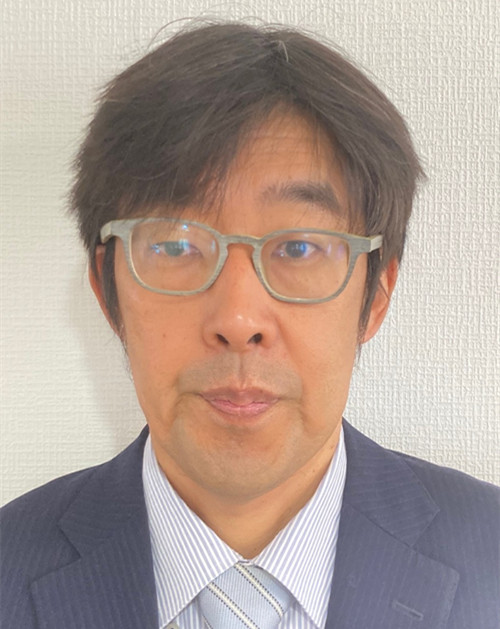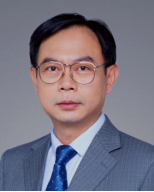2026 Speakers coming soon......
2025 Speakers

Akira-Kawamura
Tokyo Metropolitan University, Japan
Dr. Akira Kawamura is a Professor Emeritus at the Department of Civil and Environmental Engineering in the Graduate School of Urban Environmental Systems. He finished his Bachelor of Engineering degree at the Department of Environmental Civil Engineering in Kumamoto University, Japan in 1978. Meanwhile, he finished both his Master of Engineering and Doctor of Engineering degrees at the Department of Civil Engineering Hydraulics in Kyushu University, Japan in 1980 and 1985, respectively. Dr. Kawamura started as a Research Associate in Kyushu University in 1985 in which he would later serve as an Associate Professor from 1993 to 2004 in the same university. He then served as a Professor, from 2004 to 2021, and as a Professor Emeritus, from 2021 to the present, in Tokyo Metropolitan University. He was engaged in many professional activities which includes serving as Vice-President for the Japan Society of Hydrology and Water Resources from 2014 to 2016 and serving as Chairman for both the Committee on Global Environment and Editorial Committee on Annual Journal of Global Environment Research for the Japan Society of Civil Engineers (JSCE) from 2017 to 2019. Since 2016 to 2024, he had also been served as the Chairman for the Editorial Committee on Journal of Hydrological System for the Association for Rainwater Storage and Infiltration Technology. Focusing on hydrology and water resources engineering, his research contributions include 203 journal papers, in which 48 are Impact Factor (IF) papers, 14 book chapters, 126 international conference papers, 29 memoirs report papers, and 324 domestic conference papers. One of his lead authored IF paper focused on investigating urban flood runoff modeling in Japan: recent developments and future prospects which was published in 2023.
Speech title "How did the Great East Japan Earthquake Affect the Groundwater Levels in Tokyo?"
Abstract-Not only
whole Japanese Archipelago but also many Southeast Asian countries
are in serious peril of severe earthquakes as witnessed in the past,
because it is situated in the Circum-Pacific Seismic Zone caused by
the plate tectonics. Most of the megacities in Japan as well as
other Southeast Asian countries are located on the alluvial plains
where the ground is very soft and especially vulnerable for
groundwater related disasters like landslides and liquefactions.
Since groundwater is a crucial water resource for most of the cities
around the world, it is very important as the first step to
understand and evaluate the impact of a massive earthquake on the
groundwater levels for developing disaster risk deduction
countermeasures for land subsidence and liquefaction. However, so
far, almost no such studies have been carried out mainly because no
densely distributed groundwater level observations were available at
a short time interval when a huge earthquake occurred. In Tokyo
Metropolis, the hourly groundwater levels have been observed at 42
sites sine 1952 in order to mainly monitor the land subsidence
situation. When the Great East Japan Earthquake occurred on March
11, 2011, which was the strongest earthquake on record in Japan (the
4th biggest in the world) with a magnitude of 9.0 (Mw), large
fluctuations of confined and unconfined groundwater levels were
observed at 102 observation wells in Tokyo, although Tokyo is
located around 400 km away from the epicenter. In this study, taking
full advantage of the unique rare case data from the dense
groundwater monitoring network in Tokyo, we identify the fluctuation
patterns of groundwater levels caused by the Great East Japan
Earthquake using Self-Organizing Maps (SOM). Interestingly, both
abrupt rise and sharp drawdown patterns of groundwater level were
identified right after the earthquake for most of the wells. After
abrupt rise or drawdown, the groundwater fluctuation patterns during
the month are classified as one of the three typical patterns:
keeping the rise or drawdown, recovering gradually to the original
level, and over recovering more than the original level. The causes
of those patterns are also investigated in this study.

Kenichiro-Kobayashi
Saitama University, Japan
Prof. Kenichiro Kobayashi received his B.Eng. from Waseda University, M.Eng. from the University of Tokyo, and PhDs from Stuttgart University Germany and Kyoto University. After working at Kobe University as an Associate Professor, on April 2024 he became full Professor at graduate School of Science and Engineering, Saitama University. His main research topic has been the multiphase flow simulations in the subsurface, flood modellings, impact studies using climate/weather forecastings and high-performance computing. In Germany, he simulated the methane migration processes in the subsurface using two-phase (gas and liquid) and two-phase/three-component (gas and liquid phase, air, water and methane components) models. Likewise, he coupled an optimization model with the multiphase models and detected some optimized locations for the methane extractions. His current main research is high-performance computing on flood simulations. After moving to Saitama, he has been eager to make very high-resolution flood simulations on the Tokyo Metropolitan Area with the Radar rainfalls and a super-computer Fugaku. He is currently the chairperson of glocal climate change adaptation group of the committee on Hydroscience and Hydraulic Engineering at Japan Society for Civil Engineers (JSCE). He has been working for UNESCO, especially at South East Asia and Pacific Regions and served as the editor in Chief for Catalogue of Hydrologic Analysis. Also, he joined JST-JICA project at Ghana, Africa, then held international training course for the west African authority with World Bank. Through these activities, he received an international contribution award from JSCE.
Speech title "Can River Basin Flood Management in Japan Transcend Disciplinary and Jurisdictional Boundaries?"
Abstract-In 2021, the
Government of Japan enacted legislation related to river basin flood
management, with the aim of promoting integrated flood control and
safeguarding public welfare within a formal legal framework. The
current administration is also considering the establishment of a
Disaster Prevention Agency under the Cabinet Office, thereby
exploring holistic approaches that transcend disciplinary and
jurisdictional boundaries. At the national level, disaster
prevention entails the coordinated engagement of numerous
institutions—including the Cabinet Office, eleven ministries, and
two agencies—as well as close collaboration with prefectural and
municipal governments. In actual practice, local governments play a
crucial role, given their direct interactions with residents.
As a researcher, my capacity to contribute is quite limited.
Nevertheless, I chose this topic because university professors can
express their opinions relatively freely as long as they are
considerate. Even only in the flood-related research at the river
basin level, the involvement of numerous organizations is evident.
It is self-evident that no individual can handle everything alone,
and therefore, responsibilities must be entrusted to experts from
each relevant discipline and jurisdiction. At the same time,
however, the need for inter-organizational collaboration across
fields is clear. In the realm of research, this takes the form of
interdisciplinary studies. Yet such approaches are not always
readily accepted, and we must admit to occasionally feeling a sense
of alienation due to interdisciplinarity. Whether the optimal path
lies in highly advanced, specialized efforts within each field, or
in a looser network of cross-disciplinary collaboration, only the
outcomes seen in Japan 10 or 20 years from now can truly answer
that. Through the lens of flood research, I would like to reflect on
the potential of river basin flood management.

Jiutian Zhang
Beijing Normal University, China
Dr. ZHANG Jiutian is professor and executive director of Green
Development Institute at Beijing Normal University. Before this
position, he had 12 years experience in climate, energy and
sustainable development (SD) area as Director in The
Administrative Centre for China’s Agenda 21 (ACCA21), Ministry of
Science and Technology of China (MOST). He is now the director
of committee of carbon neutrality, Chinese Society for Sustainable
Development, and secretary of committee of CCUS, Chinese Society for
Environmental Science. He was Chinese delegate to UNFCCC Climate
Talks and the sessions of UN sustainable development events e.g.
Rio+20 from 2008 to 2016.
His current research focuses on strategy and pathway of carbon peak
and neutrality, with special interests in region, enterprise and
value chains. Prof. Zhang is now expert member of “national
carbon peak and carbon neutralization standardization general group”.
Prof. Zhang led various strategic policy researches and was involved
in coordinated several governmental strategy drafting, including
Technology Roadmap for Carbon Capture, Utilization and Storage of
China (2011), National S&T Plan for Climate Change of the 12th FYP
(2011), The Specific S&T development Plan for Carbon Capture,
Utilization and Storage in China (2012) and China’s 3rd and 4th
National Assessment Report on Climate Change (2015,2020), National
Climate Adaptation Strategy2035 (2021), Instruments for NDC
implementation.
Speech title "Make better use of CO2 and establish a new paradigm of carbon circular economy?"
Abstract-Carbon Capture, Utilization, and Storage (CCUS) is a crucial option for addressing global climate change and an essential technology for China to achieve its carbon peak and carbon neutrality goals. In recent years, significant progress has been made in this field. The report reviews the latest breakthroughs in the CCUS industry, especially CO2 utilization and CO2 geological sequestration technologies. The CO2 utilization technologies that integrate carbon fixation/reduction functions and carbon circular economy benefits. Considering the extensive applications, scaling, and new clustering/networked features of CCUS projects, this work provides recommendations for the new development, including focusing on the R&Ds of advanced new materials and technologies in carbon capture and utilization; the demonstration and application of new technologies in industrial and energy-related scenarios; Research on the integration models of various new technologies and explore its potential; and optimizing and managing CCUS cluster systems.
